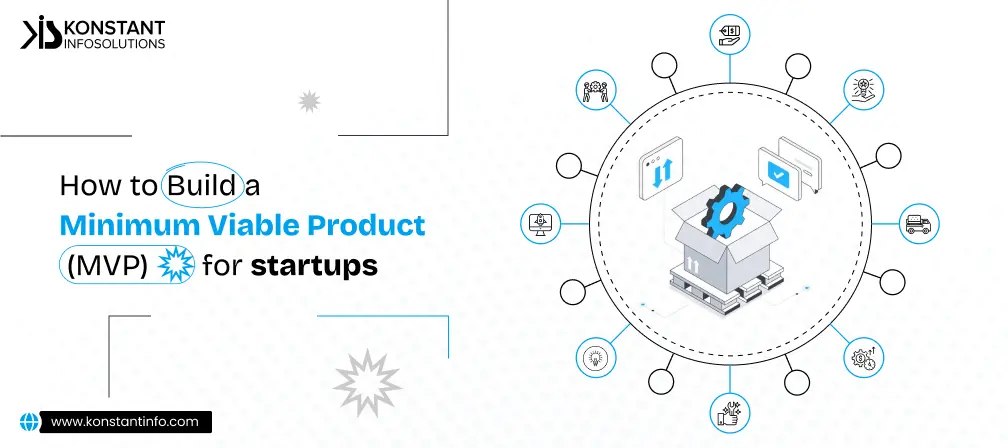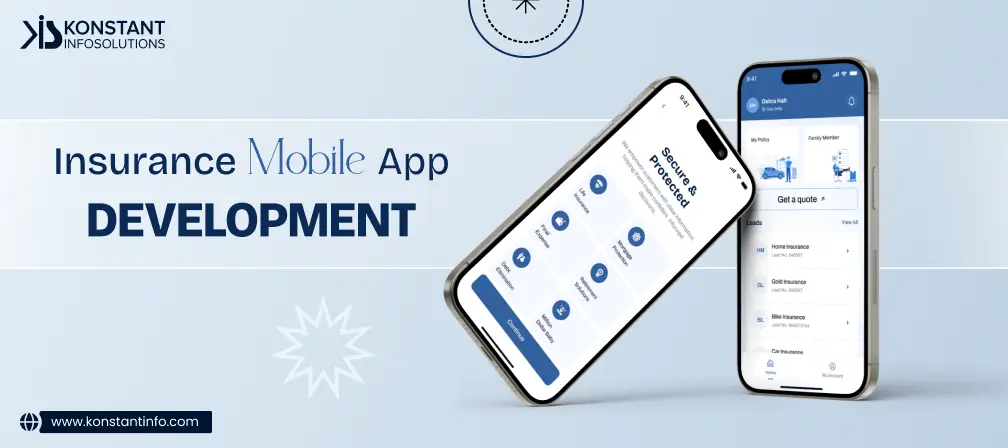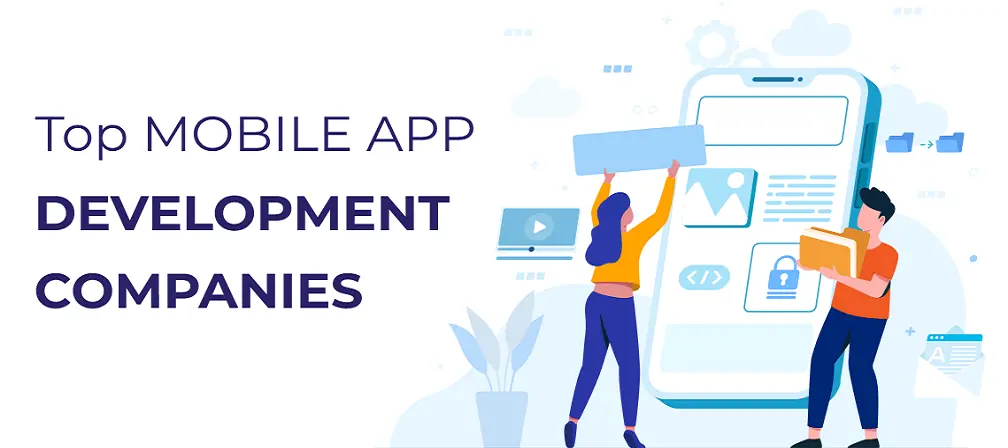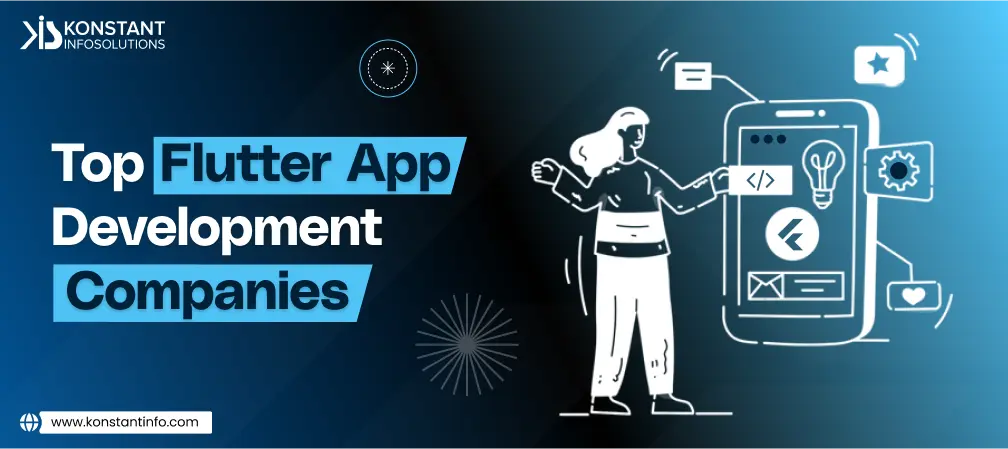
In the modern hyper-competitive startup ecosystem if you want to successful mvp development services for your startup then it will require you to strategically optimize all your available resources with a disciplined product development cycle that balances functionality and scalability while reducing risk and delay.
Your initial measures of producing the Minimum Viable Product, a simplistic version of a new advanced product with merely core features and fundamental components for earlier test-users to deliver feedback, will mandate you to plan thoroughly, require you to have familiarity of value propositions, and also demands you to meticulously execute tasks.
When it comes to building an effective and purposeful Minimum Viable Product (MVP) for your startup, it becomes paramount to accommodate unique services for efficiently validating your business idea. Subsequently, the integration of minimal functionalities in the app development allows you to collect early user feedback faster to expedite iterative development. This actually enables your team to continuously refine the core features and functionality while also improving overall customer experience of the product according to testing and feedback after each iteration. The creation of your MVP is not specifically about presenting a stripped-down version—it’s a strategically calculated methodology to product development that offers usability, performance and scalability.
In this blog, we will help you with the complex and sophisticated mvp development services and processes for your startup, highlighting a professional and technical viewpoint. As your mvp development consultant, we will cover all the essential aspects, procedures, and analysis required to build a launchpad for successful testing and market validation.
But before that let’s understand the purpose of an MVP;
An MVP is a strategically scoped, introductory version of an app that has some acceptable features with functionality unique to your business or startup to help draw early adopters to collect their feedback to help refine future versions.
Before we look into the development steps for building an MVP, it is imperative to understand that apart from cost efficiency and assumption validation, there are several other advantages of MVP development for startups.

The development of your MVP aids in validating the core functionality of the business model with minimum features. This allows for a fast reliable high-quality development process.
This aids you in understanding the target audience and creating a close community for fast feedback by spending less time and resources in the development process.
It is imperative to not clutter the product with unwanted features when building an MVP, ensuring faster adoption of the product by users.
Developing an MVP with just key functionality greatly increases the deployment speed, which helps you prove critical assumptions and beliefs quickly.
The development process of an MVP offers space for future upgrades and adding new technology. It requires you to become especially responsive to the ever-changing shifts in the market to keep the product relevant.

Before you even consider composing a single line of code to build an MVP, the development process must include an essential step that requires defining and deciding the core value proposition. And we can do so by asking the below questions;
All these questions will not only demand you to perform in-depth market research in consumer behaviour but also require you to comprehensively formulate competitor analysis. At the same time, you need to establish a precise presentation of your unique selling proposition to let the target audience learn about the benefits of your product.
Core Value Mapping: You can use the Value Proposition Canvas framework that offers a methodical system to communicate various customer profiles (careers, pains, modifications) and includes the value map (pain relievers, profit makers, products & services).
After getting familiarized with the value concept, recognising the core assumptions becomes the next critical step of MVP development, where you identify sensitive ever-changing insights, user theories, and speculations underpinning your business model. And if some of the key assumptions are confirmed inaccurate, this might lead to reduced practicality and usefulness of your venture. The assumptions include user conditions, cost considerations, fundamental features, and customer behaviour.
Prioritizing Assumption: Before the implementation, you can proficiently use risk-reward models to identify and place assumptions according to their testing ease and potential impact.
At this previous stage, we have already described the value proposition and root assumptions. Now we need to turn these into an actual output. Here, you can only prioritize essential and user-critical features. The development will not provide a full featured product but help build a MVP with limited functionality to only define core values and fundamental assumptions.
There are several methods to facilitate you choosing the ideal limited features based on priority according to characteristics such as should include, must include, and won’t include. These factors will help you focus continuously on removing nice-to-include functionality and combining the truly essential “Must-have” features, assisting in verifying the core value proposition and analysing the vital hypotheses and theories recognised in the earlier stage.
Mapping User Journey: Make illustrated visuals of the entire user-experience journey that ultimately enrich the core value proposition.
Analysing Technical Feasibility: Before adding any feature in your MVP development, it is essential for you to fully consider the technical intricacy and estimated effort and time needed to integrate respective functionalities. You also need to evaluate advanced technology stack, and individual skill and expertise of your team.
When it comes to building a basic MVP, you need to perform elaborate market research for a technology stack to drive a significant process that easily benefits your operations. A dedicated technology stack can influence the performance of your MVP with only must-have features. It also impacts maintainability and scalability of the MVP.
The technology stack requires a complete understanding of the basic features needed to functionally operate your MVP. It is crucial for you to predict the user load and the development speed to accurately equip the app with the required technology stack.
Scalability: You may be developing the MVP for limited users right now, but then accordingly prefer tech to accommodate larger user-base efficiently in near future.
Protection: Whether you build an MVP or create fully functional apps, both need to have essential safety measures to keep your platform safe.
Cloud compatibility: You need to choose one cloud computing platforms like AWS according to cost and dependability.
There are various types of agile methodology available for helping in the development of the MVP. While iterative implementation also enable adaptability, faster user feedback, and regular updates for your MVP development. You will need to prioritise smaller and more manageable features to achieve faster development cycles. Regularly communicating within your skilled team is required to perform code reviews. The programmed testing is also needed to maintain code while ensuring quality and timely delivery.
Version Management:
You can run a version control scheme (e.g., Git) to handle changes in the code and offer collaboration within the systems.
Testing Automation:
The various basic end-to-end and integration tests ensure the core feature’s functionality.
Monitoring Performance:
You will need to place necessary monitoring tools to keep looking into key performance indicators.
The main purpose of the mvp development services is to provide user feedback from new testers. Which will require you to build tools to gather both useful and large data sets.
You will need to perform surveys, interviews and kinds of direct or indirect interactions while tracking behaviour and conversion rates. This feedback will demand meticulous analysis to determine sites to enhance and verify your initial assumptions. You can easily repeat the MVP interaction according to the received feedback. It might require you to placing, altering, or actually withdraw some features.
Analytics Management:
There are various platforms like Google Analytics to effectively follow feedback and key metrics of the users.
A/B Testing:
Perform several A/B trials for corresponding additional features accordingly for conversions and user engagement.
It is highly essential for you to specify precise key metrics to estimate the MVP development success. The standards should align with your already defined value proposition and also stimulate key assumptions that are being tested. It includes various types of acquisition costs and engagement metrics. It also processes churn rate and conversion rates.
You will need to regularly observe the above standards and metrics to investigate the very effect of your iterations. According to the provided understandings from the MVP phase, you can easily define and create the path for MVP development . This path can effectively place features on the priority list that not only addresses user feedback for verifying certain assumptions. But also provide long-term vision of your MVP.
KPI Measurement:
This requires clear understanding of the key performance indicators (KPIs) which will help in measuring the performance of the MVP.
Roadmap Creation:
You can use feedback collected from the integration of basic features and technology in MVP development to make realistic roadmap.
The MVP development cost can differ immensely, generally staying between $15,000 to $40,000 and more. The cost is impacted by additional factors such as development complexity of the product, selection of an advanced tech stack. Despite deciding various platforms (Android or iOS or cross-platform), and most importantly location and availability of the team.
A Minimum Viable Product can help startups to build a resilient grip in the market while effectively pursuing confirmation for their assumptions and ideas. However it mandates you to follow a strategical and specialised approach that is based on affirming key values and beliefs, and precise testing for combining iterative feedback with the development process. And through following defined practices in this development process, startups can efficiently employ the MVP as a fundamental foundation, and a learning instrument for sustainable expansion as well. The process of turning a well-documented idea into a profitable app starts with a strong technical base and a decisively built platform – the Minimum Viable Product.
MVP development is the process of building a product version with core functionality and limited features to collect user feedback.
An MVP verifies business assumptions and beliefs by creating a product with only core features. It helps businesses with user feedback, assumption validation, and offers help in driving future development with less cost and time.
No, It is not simply a prototype. An MVP is an operational product with limited functionality for faster adoption through early users.
There are many successful mvp app development company has invested seriously in MVP development including Dropbox, Groupon, Airbnb, etc.
The startups need an MVP with limited features to verify their business vision with as little as possible resources. It helps with faster user feedback to make upgrades in future development projects.



Vipin Jain is the Co-Founder and CEO at Konstant Infosolutions and is in charge of marketing, project management, administration and R&D at the company. With his marketing background, Vipin Jain has developed and honed the company’s vision, corporate structure & initiatives and its goals, and brought the company into the current era of success.
Or send us an email at: [email protected]